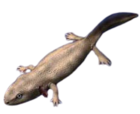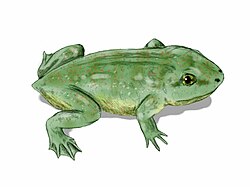| Herpele | |
|---|---|
 | |
| Herpele squalostoma , female with her young | |
| Scientific classification | |
| Kingdom: | Animalia |
| Phylum: | Chordata |
| Class: | Amphibia |
| Order: | Gymnophiona |
| Clade: | Apoda |
| Family: | Herpelidae |
| Genus: | Herpele Peters, 1880 |
| Type species | |
| Caecilia squalostoma Stutchbury, 1834 | |
| Species | |
See text | |
Herpele is a genus of caecilians in the family Herpelidae. They are endemic to Central and Western Africa (from southeastern Nigeria east to western Central African Republic and south to western Democratic Republic of the Congo, possibly to Angola). [1]
At least Herpele squalostoma is probably oviparous and provides parental care: the young feed on their mother's skin (they are "dermatophagous"). [2]



